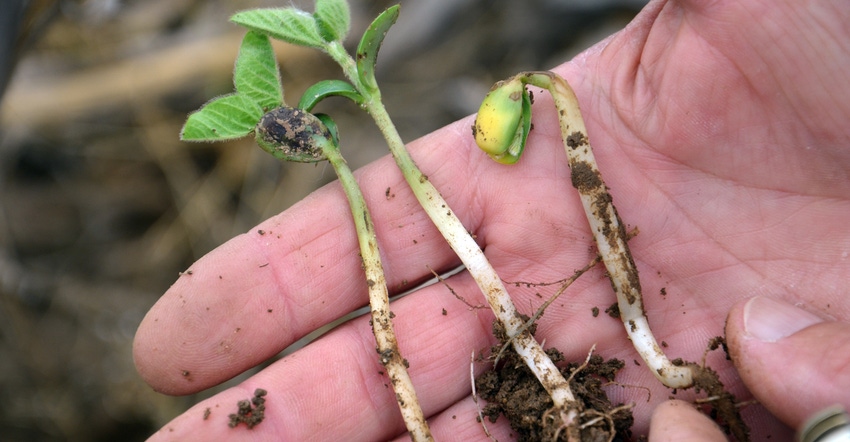
Once soybeans are planted, the quest toward top yields is officially on. Welcome to Soybean Watch. This new feature is designed to help you zero in on potential challenges and opportunities in your fields.
Here is what you can expect: One field of soybeans in central Indiana will be followed closely from now through harvest. Observations will trigger reports and articles that could relate to what’s happening in your fields.
Final yield will be reported, but there is no contest associated with this feature. The sponsor is Beck’s, Atlanta, Ind. Steve Gauck, an agronomist with Beck’s, Greensburg, Ind., will visit the field and offer insights.
Here are Gauck’s initial thoughts about what to look for during the first few weeks after planting and emergence. See if these 10 checkpoints apply to your soybean fields.
1. Take stand counts. If you’re in 7-inch rows, the hula-hoop method is very effective, Gauck says. Check several spots picked at random. In 15-inch or wider rows, he prefers counting plants down the row. “I usually measure off 1/1,000 of an acre with a tape and count plants in rows on both sides,” he says.
2. Determine if emergence is uniform. This hasn’t been looked at as carefully in soybeans as in corn in the past. “It will be now and in the future,” Gauck says. “If you’re aiming for final stands closer to 100,000 plants per acre and since seed is expensive, every plant matters.”
3. Dig where stands don’t meet expectations. The only way to determine why the stand isn’t as good as expected is to dig and look for clues.
4. Evaluate for insect damage. Does it appear that insects damaged emerging seedlings? If so, try to identify the insect. Information collected now will help you make decisions for next year, such as if you should apply a seed insecticide, Gauck says.
5. Check for germination and crusting issues. Did some plants break their necks trying to emerge? Does it appear weather was a factor?
6. Consider if planter performance was subpar. Now is the time to check the planter if you suspect stand issues are tied to poor planter performance. Was each row operating properly?
7. Take moisture conditions into account. Dig carefully so you can determine seed depth. Perhaps some seeds were placed in moist soil and some went into dry soil. This may have been due to uneven depth placement, Gauck observes.
8. Observe possible disease symptoms. Seedling diseases can cause plant death and thin stands. If you determine a disease is involved, it may impact plans for 2018.
9. Take herbicide program into account. Weather conditions interacting with certain herbicides can cause injury. If you followed labels and honored planting restrictions after application, you should avoid herbicide injury.
10. Distinguish between look-alike symptoms. Symptoms of disease and herbicide injury can be hard to separate. “Typically, if there is injury to the seedling belowground, it’s likely disease,” Gauck says. “If symptoms are just aboveground, suspect herbicide injury.”
About the Author(s)
You May Also Like




